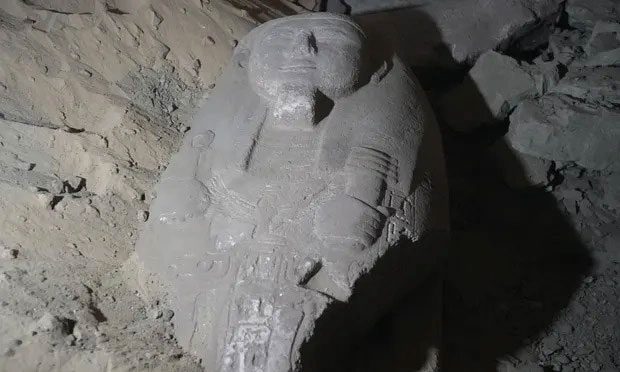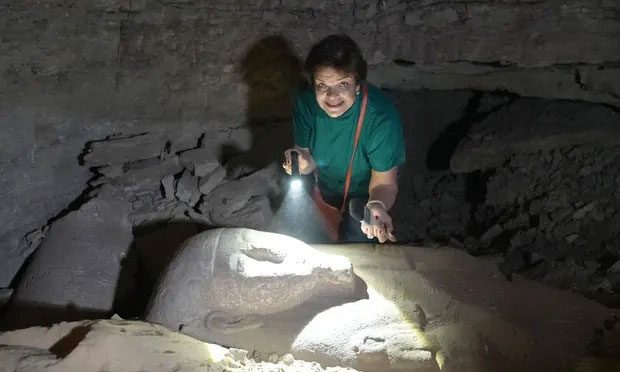Beneath the sands near Cairo, archaeologists have uncovered the tomb of Ptah-em-wia, a high-ranking official during the reign of Pharaoh Ramses II, right within his own burial site.
The massive granite sarcophagus is inscribed with tributes to Ptah-em-wia, who served as the treasurer to Pharaoh Ramses II—the most powerful Pharaoh of Egypt, according to the Guardian.

The sarcophagus of Ptah-em-wia. (Photo: Windfall Films).
Dr. Ola El Aguizy, a professor at the Department of Archaeology at Cairo University, discovered the sarcophagus in Saqqara, an ancient burial ground located about 32 kilometers south of Cairo.
In 2021, Dr. El Aguizy had previously unearthed the tomb of Ptah-em-wia. She recently uncovered an underground burial chamber within the tomb along with the sarcophagus. This discovery could provide scientists with additional insights into the rulers of Egypt following Pharaoh Tutankhamun.
In the middle of the tomb, Dr. El Aguizy’s team found the top of a vertical shaft—a sign indicating a passage to a burial chamber. However, the shaft was over 8 meters deep, requiring the team to spend a week just to remove the sand.
The archaeological team utilized a bucket attached to a pulley system powered by hand. Professor El Aguizy then squeezed herself into the bucket and descended slowly down the shaft. At the bottom, she was astonished to find the sarcophagus.

Archaeologist Ola El Aguizy examining the sarcophagus of Ptah-em-wia, discovered during excavations at the Saqqara cemetery, south of Cairo, Egypt. (Photo: Windfall Films).
Finding a complete sarcophagus in its original tomb is extremely rare.
In an interview with the Observer, Dr. El Aguizy remarked: “The discovery of this sarcophagus in its original position within the burial chamber is fascinating, as it belongs to the tomb’s owner. This doesn’t always happen; sometimes the sarcophagus belongs to one person, but the tomb is for someone from a different era. But this time, that’s not the case.”
She noted that the titles inscribed in hieroglyphs on Ptah-em-wia’s sarcophagus indicate his close relationship with the king. This demonstrates that he had “a very important role in the administration of that time.”
Dr. El Aguizy also pointed out that a piece near the head of the sarcophagus had been broken off, indicating it had been looted in the past, similar to many other artifacts from ancient Egypt, according to National. However, Ptah-em-wia was the builder of this tomb, and fortunately, his sarcophagus remained in its original location when discovered.
Professor El Aguizy stated: “This sarcophagus is a classic example of the style reserved for the elite. It is made of granite and is adorned with the usual symbols of the gods, including the sky goddess Nut on the lid, her hands covering her chest with wings spread to protect the deceased, and the four sons of the sun god Horus surrounding the sarcophagus with prayers for the protection of the deceased.”
Dr. El Aguizy’s team will continue to delve deeper into the sarcophagus to uncover the full story of Ptah-em-wia’s life.
Dr. Mustafa Waziri, Secretary-General of the Egyptian Antiquities Council, stated that this discovery is significant due to Ptah-em-wia’s prominence in the court of Pharaoh Ramses II.
In addition to managing Pharaoh Ramses II’s temple in Thebes, Ptah-em-wia was also responsible for royal records, supervised livestock, and served as the head of the treasury.


















































